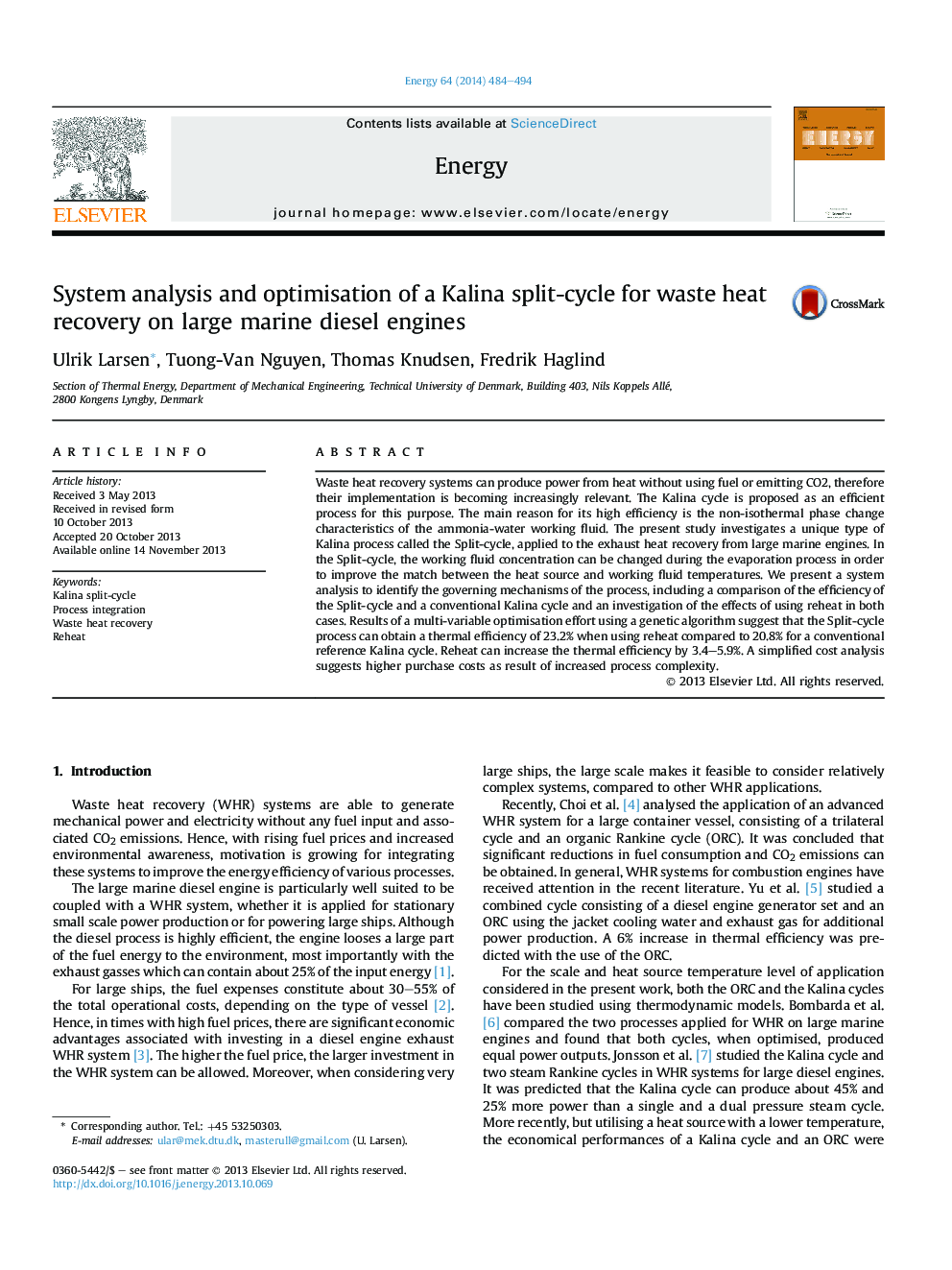| Article ID | Journal | Published Year | Pages | File Type |
|---|---|---|---|---|
| 8078755 | Energy | 2014 | 11 Pages |
Abstract
Waste heat recovery systems can produce power from heat without using fuel or emitting CO2, therefore their implementation is becoming increasingly relevant. The Kalina cycle is proposed as an efficient process for this purpose. The main reason for its high efficiency is the non-isothermal phase change characteristics of the ammonia-water working fluid. The present study investigates a unique type of Kalina process called the Split-cycle, applied to the exhaust heat recovery from large marine engines. In the Split-cycle, the working fluid concentration can be changed during the evaporation process in order to improve the match between the heat source and working fluid temperatures. We present a system analysis to identify the governing mechanisms of the process, including a comparison of the efficiency of the Split-cycle and a conventional Kalina cycle and an investigation of the effects of using reheat in both cases. Results of a multi-variable optimisation effort using a genetic algorithm suggest that the Split-cycle process can obtain a thermal efficiency of 23.2% when using reheat compared to 20.8% for a conventional reference Kalina cycle. Reheat can increase the thermal efficiency by 3.4-5.9%. A simplified cost analysis suggests higher purchase costs as result of increased process complexity.
Related Topics
Physical Sciences and Engineering
Energy
Energy (General)
Authors
Ulrik Larsen, Tuong-Van Nguyen, Thomas Knudsen, Fredrik Haglind,
